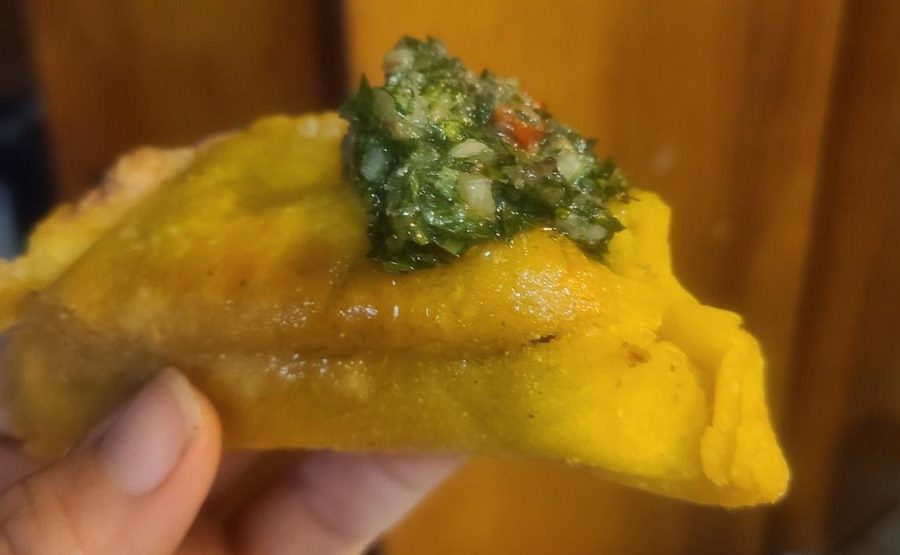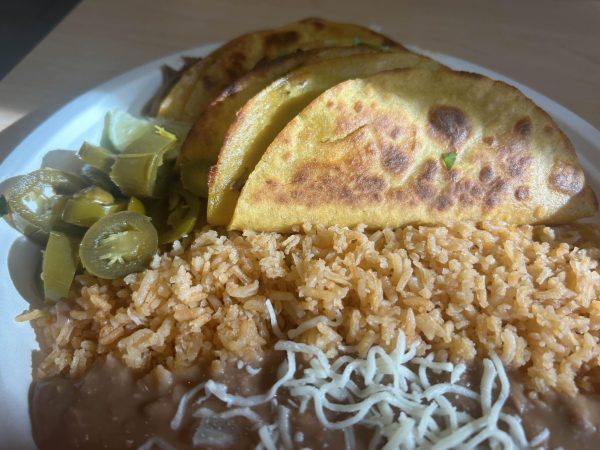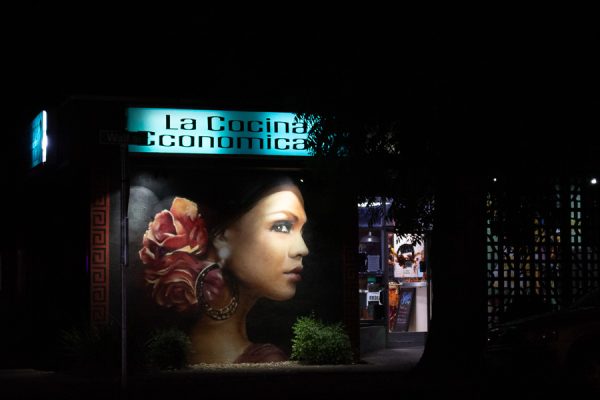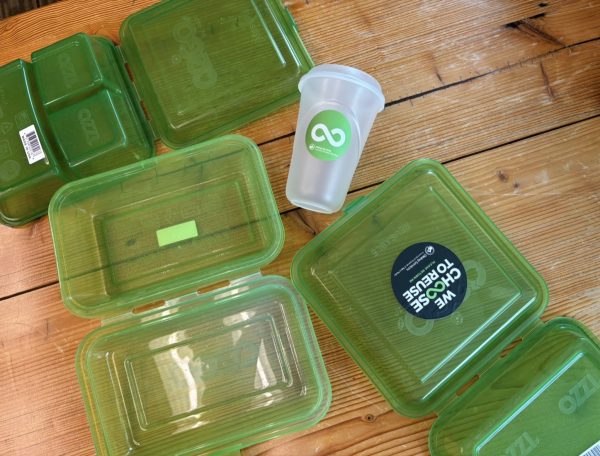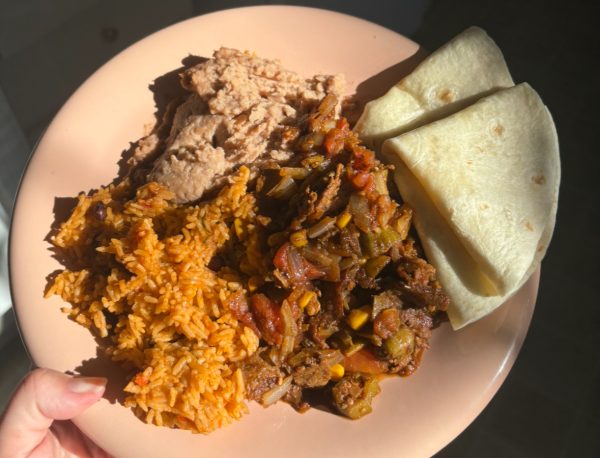End boring meals with cheap Chico chimichurri
Chimichurri on cornflour empanada
The best things in life take time. They can also make a mess. But if that mess is a kitchen creation that makes every sandwich, pizza and taco burst with flavor, it’s worth thanking the community for bringing you that possibility.
A symphony of flavors, this “Chico chimichurri” is an ode to the region that conceived it. Most of the ingredients came from my garden and the Saturday Farmer’s Market. Even the reusable jar it’s stored in came from the market.
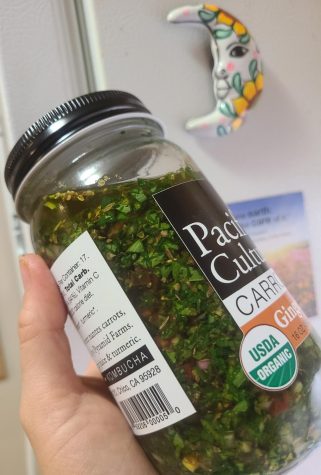
Chimichurri is a tangy, spicy and aromatic green condiment traditionally made from European influences in South American food. Although a specialty of Uruguay and Argentina, it’s found in homes and restaurants throughout South, Central and North America and has different versions depending on families and regions.
Traditionally, chimichurri includes Italian parsley or cilantro with onion, peppers, garlic, salt, oregano, olive oil and an acid like red wine vinegar or lemon juice.
Chimichurri’s versatility lends it to everything ranging from main dishes to salad dressings. A signature dip for empanadas, it makes a great marinade for grilled meats or vegetables and goes well with something like crackers and cheese.
The joy of chimichurri lies in the tradition of making something from nothing. The recipe is a great way to practice culinary skills. No matter how you mess it up, it promises flavor. Easily mendable — chimichurri is nearly impossible to fail.
By making chimichurri, you learn how to gauge texture, taste and ratios, and make adjustments. The process has taught me how to eyeball ingredients and use my imagination for experimental versions – two skills common to great chefs.
By using chimichurri for culinary practice, you learn how to make your own signature style. For a sweet-heat style, I add clove, fennel seed and either more or spicier peppers.
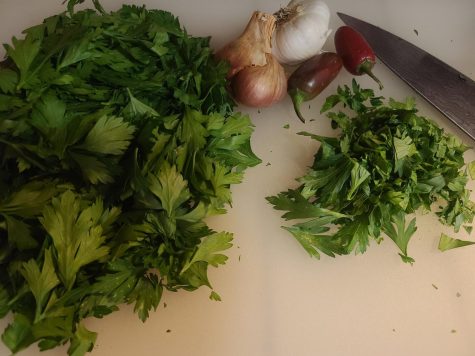
Encourage yourself to practice knife skills as well. Although ruining a recipe is almost hard, the decision to chop or process ingredients can be a culinary taboo for some.
Unless you have a nice processor that will chop to a specific consistency of your choice, most blenders will turn chimichurri into a purée. Most chimichurri spans a textural scale from pesto to pico de gallo.
I prefer chopping to the blender. It takes a while, but it makes you savvier with ingredients.
Fortunately, since this recipe aims to make you wiser with food, you decide whether you want a purée, pesto or salsa texture. The experiment is the beauty of learning this recipe.
I based this recipe on another one from author and cancer-survivor Karina Carrel’s food blog. Carrel learned to make chimichurri from her Uruguayan father.
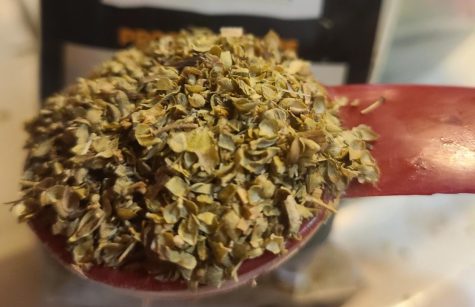
The oregano came from the bulk section at New Earth Market but is also in WinCo, S&S Organic Produce and Natural Foods, and Chico Natural Foods Co-Op. Salt and dried herbs save money and packaging waste when bought in bulk, also giving you the freedom to decide how much you want.
Aside from the parsley and shallot, almost all ingredients for this recipe have been stored in my home for months, having produced many more chimichurris before, making this recipe cheap.
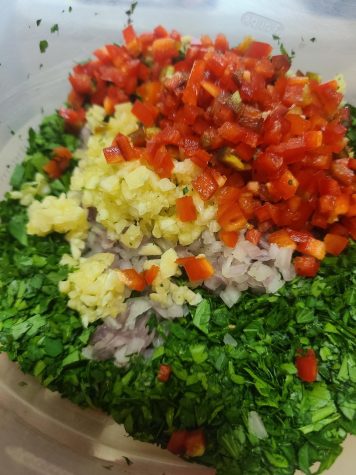
Ingredients:
- 1 ½ cup of Italian (flat-leaf) parsley
- 1 shallot (about 2 to 3 tablespoons, depending on how much pungency you want; onions are great, too)
- 7 to 8 minced garlic cloves (or around 1 ½ tablespoon of pre-minced garlic from a jar)
- 4 small jalapeños (please, use more if you’re hankering for more spice!)
- 1 teaspoon of sea salt
- 1 ½ cup of extra-virgin olive oil
- 6 tablespoons of red wine vinegar (lemon juice works also)
- 2 to 4 tablespoons of dried oregano
Equipment:
- Cutting board
- Well-sharpened chef’s knife (and/or blender, depending on the mood)
- A jar or other container (my reusable jar holds 16 ounces, but this recipe left me with an extra four to eight)
Procedure:
Gather all ingredients and chop away! That’s all there is to it. Eat it right away.
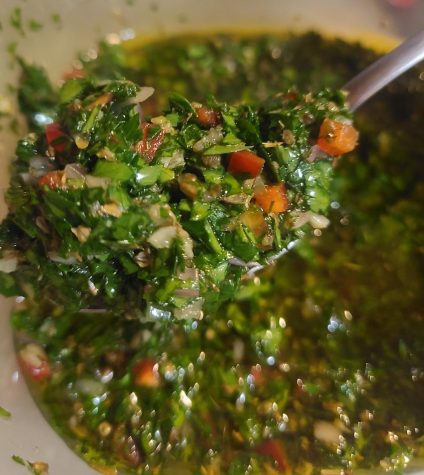
The flavor intensifies with time. I store it in the fridge to keep it fresh. The oil solidifies when cold but melts fast.
I chop everything as small as possible, although I have tried some fantastic chimichurri from people who prefer chunkier ingredients.
Do you prefer thicker pieces of pepper and onion but want everything else puréed? Go for it! Do you want everything uniform? It’s your show! Chimichurri gives you the freedom to test yourself and explore boundaries without completely ruining the outcome. After all, it’s only a medley of flavor, no matter how “incorrect” the recipe may be.
Shae Pastrana can be reached at [email protected] and @Pineyfolk on Twitter.



